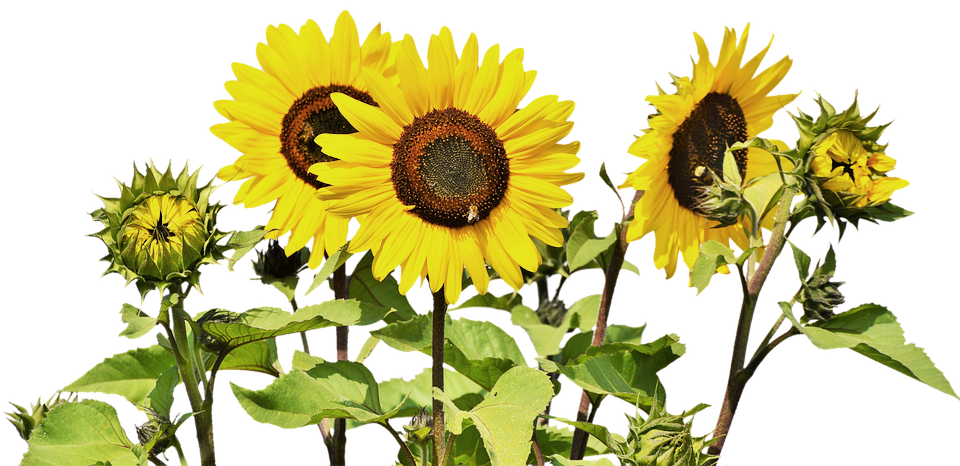
Practices and Principles of Ecological Gardening
By Kaw Valley Greenhouses, Inc.
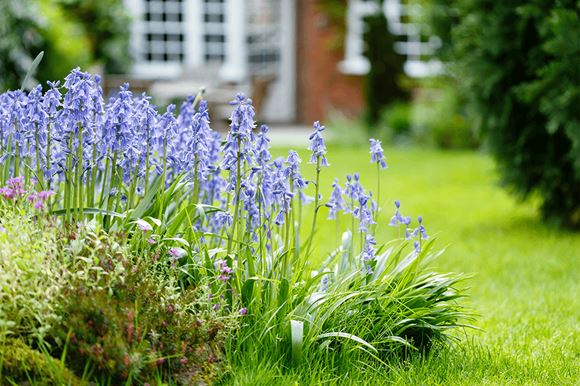
Do you dream of a garden that needs less maintenance, less water, and fewer inputs yet can support more wildflowers, more biodiversity, more pollinators, and healthier soil? Ecological gardening may be right for you. It's one of many movements—from ecological agriculture to ecological city planning—that strives to mimic and restore our local ecosystems and the myriad lifeforms they support, including us humans. As it happens, when you start to work within your local ecosystem, rather than unknowingly against it, your garden reaps the benefits too!
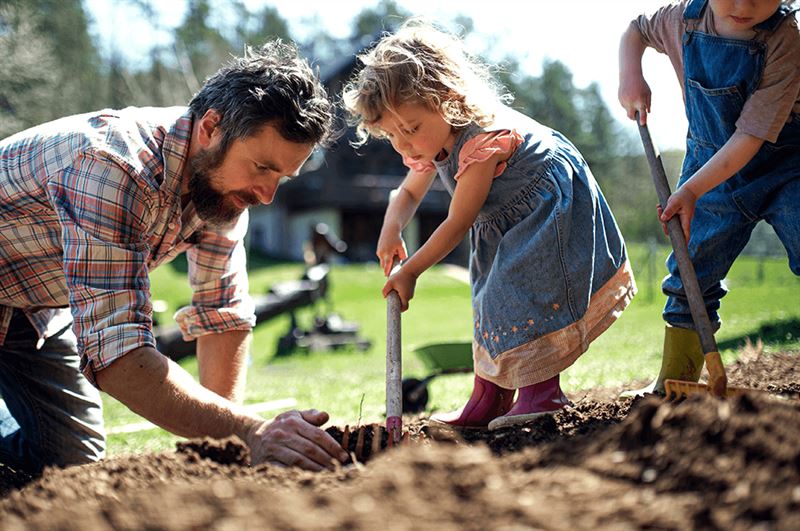 What is Ecological Gardening?
What is Ecological Gardening?
Ecological gardening is the art of growing gardens that are suited to the ecoregion that you live in. It requires a shift in thinking. Instead of only asking, what do I want to plant? An ecological gardener first asks, what already wants to live here? First of all, that requires looking around you to the natural parks in the area, and secondly, doing some research into your local ecoregion. It will be different in the various parts of Missouri, Kansas, or Nebraska. And it will also vary in your particular micro-climate and location. Are you on a sunny hill, a wet, shady area, a wetland, a forest, a river valley, a meadow, or the open plains?
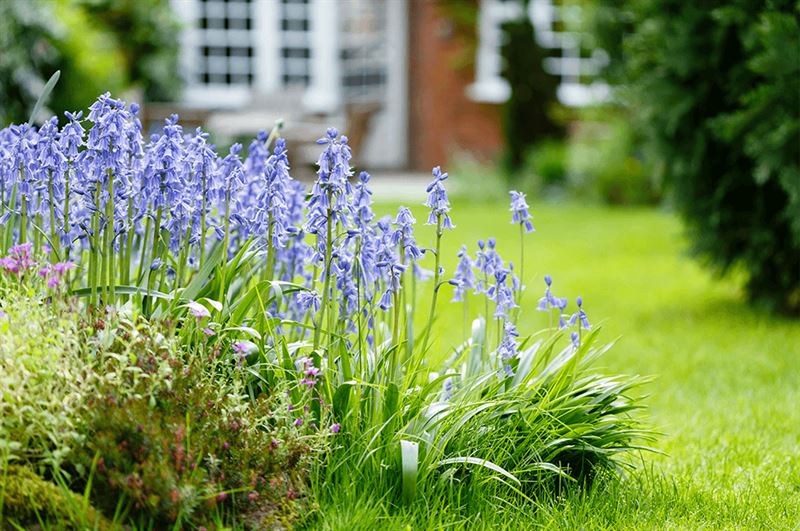 1. Discover Your Own Ecoregion
1. Discover Your Own Ecoregion
Discovering your local ecoregion is the first step of ecological gardening. For many people, this may be one of the most exciting journeys of their life. It's like discovering for the first time the place where you've been all along. If you're a gardener, you're likely already familiar with the common scents, birds, trees, grasses, and wildflowers that greet you every season. Discovering the larger ecoregion around you is like fitting together the pieces that you already know. After a while, you may start to truly see where you live and appreciate your home's unique character.
Here are examples of the ecoregions and natural plant communities in the Midwest:
-
Kansas: High Plains, Flint Hills, Arkansas River Lowlands, Smoky Hills, Osage Cuestas.
-
Nebraska: Shortgrass Prairie, Mixed Grass Prairie, Tallgrass Prairie, Sandhills.
-
Western Missouri: Wooded Osage Plains, Cherokee Plains, Loess Hills, and Rolling Prairies, Missouri Alluvial Plain.
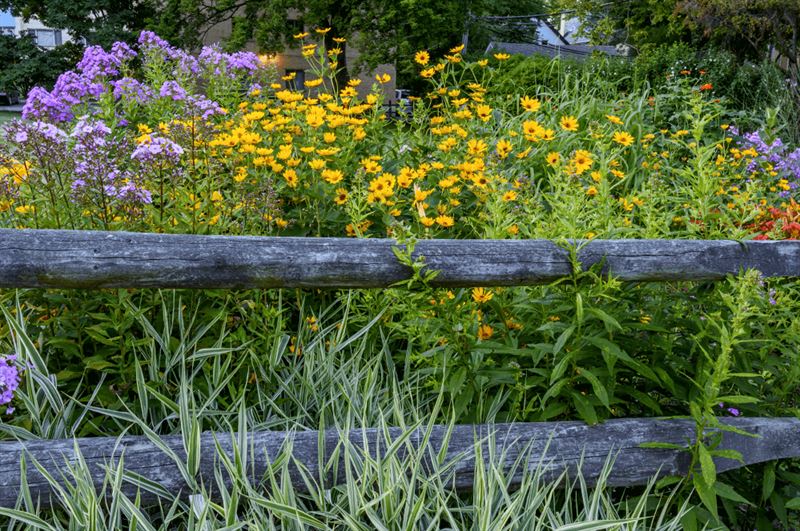 2. Grow the Right Plants for Each Place
2. Grow the Right Plants for Each Place
Every ecoregion has a vast inventory of local plants that have grown and thrived there for thousands of years. Wildflowers are some of the most common native plants that you can grow in your ecological garden on the great plains. They're vigorous growers, are specially adapted to local pollinators, resilient against extreme weather, often drought tolerant, have herbal properties, and are just plain beautiful. You may be already growing some native flowers like coneflower, black-eyed susans, yarrow, or milkweed.
Ecological gardening asks us to go a few steps further. Ideally, we should ask, given the natural conditions of this place, what would thrive here? A wet, shady spot is best for plants that need wet conditions and shade. While a dry, sunny location is ideal for drought-tolerant plants.
The gold standard is to place plants where they will require no extra water once established. If we can do that, then we're one step closer to achieving a garden where the plants thrive with minimal care from us, as they do in a larger ecosystem. To choose the best plants for each spot, here are qualities to consider:
-
Light: study the sunlight in your yard to know how much sun each spot receives. Full sun means six hours of direct sunlight per day or more. Anything less is either shade or partial shade conditions.
-
Soil: to determine the drainage of a site, dig a hole eight inches deep and fill it with water. If it takes less than 12 hours to drain, the site is very well-drained. If it takes more than 24 hours, the site is poorly drained.
-
Space: ensure the space can accommodate your plants at their mature height and breadth.
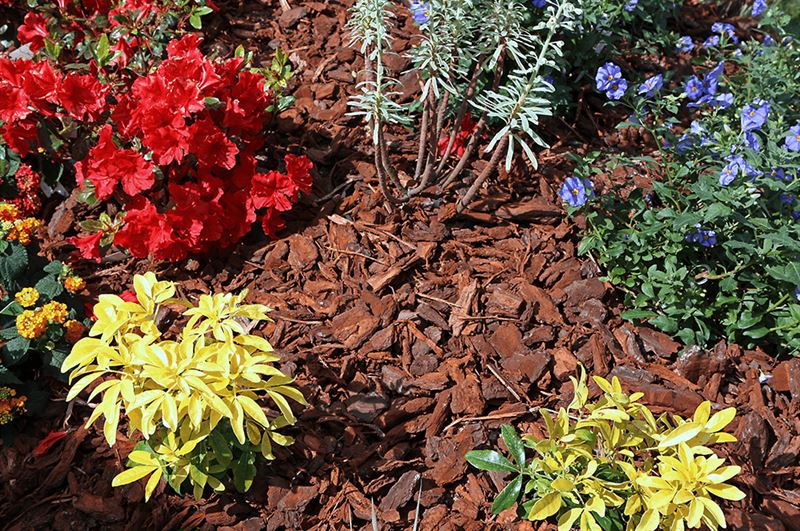 3. Keep Your Soil Covered
3. Keep Your Soil Covered
Soil is the foundation of all the plants you grow. It's alive and teeming with thousands of microorganisms working full-time to make nutrients available for your plants. When these microorganisms are exposed to sunlight, they die from UV radiation, and the top layer of soil slowly blows and washes away.
Out in a natural ecosystem, you'll seldom find exposed soil. If an animal ever does dig up some earth, it's quickly covered with leaf litter or colonized by new plants. In a garden, we call these plants "weeds." They germinate on the soil that we constantly expose through tilling and through, you guessed it, weeding.
Planting more perennials, rather than annuals, is one ecological gardening way to reduce tillage. Mulch, cover crops, or growing desired plants more densely will require less weeding and nourish your soil at the same time. You'll still have to pull the occasional weed, but you'll get closer to the no-maintenance ideal of an ecological garden. Plus, your soil will be protected and benefit from the nourishment of decaying mulch.
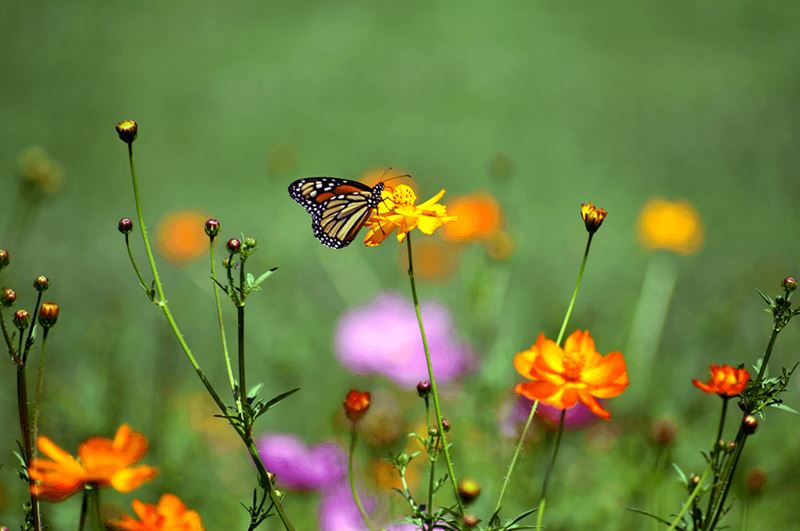 4. Attract Beneficial Insects
4. Attract Beneficial Insects
Insects are the foundation for the web of life both in our ecosystems and gardens. They pollinate flowers, control other insects, maintain soil structure, and become food for other animals. In a healthy ecosystem, insect-eating birds, frogs, and other creatures prevent insects from multiplying out of control. Because the typical garden lacks this natural biodiversity, we often experience outbreaks of a single species, which can damage our plants. We call these damaging insects "pests."
Instead of treating them with chemicals, in ecological gardening we take a lesson from nature and introduce beneficial insects to control the pests. But doing this is easier said than done. You do have the option of buying ladybugs who can control many common pests, like aphids, scale, leafhoppers, and mites. However, a better long-term strategy is to increase the plant diversity in your garden. A greater variety of plants attracts a greater diversity of insects, and birds, which will keep pest insects in check. And more plant diversity attracts more pollinators as well.
But, if you currently have a pest problem, it's best to control it through organic methods, so you avoid introducing toxins into the ecosystem. Or just simply let the plant perish. It may seem surprising, but from an ecological gardening perspective, a plant that is susceptible to pests may be a sign that it's not suitable for that location or ecoregion. Rather than trying to continually prop it up, the solution may be to remove it from your garden and replace it with a plant that's a better fit for your ecology.
5. Use Natural Fertilizers
Most synthetic substances, like fertilizers and pesticides, can damage the beneficial microorganisms in the soil. In healthy soil, these creatures do all of the work of a fertilizer. They convert nitrogen from the air into the soil and help decompose dead plant matter into the materials that a plant needs. If we fertilize repeatedly, we lose this living ecosystem, and our plants become dependent on inputs from synthetic fertilizers.
An alternative is to mimic a natural ecosystem, let's say a forest, where leaf litter, dead plant matter, and animal scat are natural fertilizers. They drop on the ground, where they feed the soil microbes, which then nourish the plants. In ecological gardening, we can imitate this process by keeping a compost pile and spreading compost, manure, leaf mulch, straw, lawn clippings, or bark mulch on our gardens.
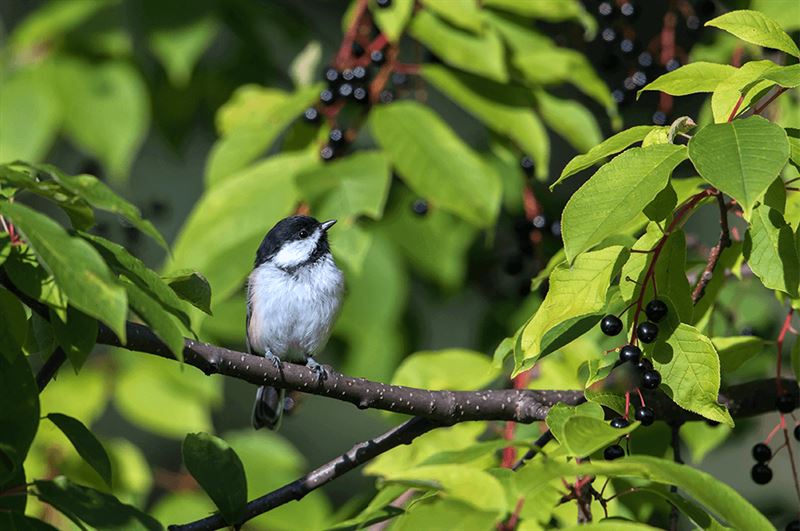 Weaving It All Together
Weaving It All Together
Ecological gardening is both the practice of using ecological techniques and the art of growing the plants that already thrive in our region. These techniques let our gardens flourish while reducing the need for watering, weeding, and maintenance. Meanwhile, we get to enjoy the abundant native plants that naturally grow around us. Wildflowers, grasses, hickory, oak, walnut, serviceberry, and chokecherry are just a few of your many choices.
But it's your journey to discover the native plants that you wish to grow. At the end of the day, you'll enjoy a beautiful garden that's healthier for you, your plants, and the wildlife around you.
Want to know if any of your perennials from Kaw Valley Greenhouses are native plants? Visit our website to find out and browse our entire selection!

